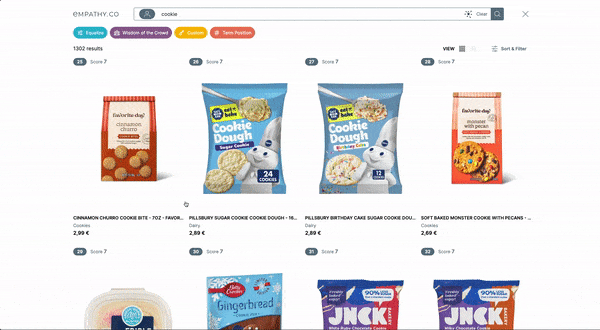Development Journey: My History
Development Journey: My History
‘How did I get to that product last week?’ It’s a frustrating question we have probably all asked ourselves, in some form or another. Let’s say you found a product last week, but you don’t remember how you ended up landing on it. Sometimes, we get inspired and search terms come to us in the moment, and then we can’t recall them. But what if the website you were shopping on could do it for you?
Well, then you could see your queries and understand how you came across that beautiful, green sweatshirt you loved without having done a literal search for “green sweatshirt.” That term would return lots of results that you would have to dig through, but it was the “varsity Seattle” query that came up with the product you found and fell in love with.
That is one of the key values of My History, the fact that it allows users to access their previous intents and, essentially, their own memory. Another important aspect that the feature addresses is user privacy. What if users could truly have control of their search history? That was a question we asked ourselves when we began the journey of developing the My History feature to solve the “how did I find that” fiasco.
The Interface X Team started developing this cutting-edge, user-facing tool with more than just privacy in mind; we also had to consider how to make it understandable, easy and seamless for the user to apply to their everyday search habits.
The trick was finding a way to create a user-friendly interface that allows shoppers to access and manage their own search history and choose if, which, and when History Queries should be included, in order to best fit their desired results. After lots of prototyping to undertake this ambitious feature, My History is the outcome.
An application that serves as an extension of the user’s memory during their shopping experience, My History locally stores History Queries on the user’s device. Doing so allows them to have full control over their data by giving them the ability to delete one or more specific queries, or disable the feature altogether.
The third key UX aspect was clear and concise operability, enabling any user to access and take action on the complete list of their History Queries. Next on the list was determining how exactly they would be able to do that.
We’ve all searched for something we didn’t really want, sought out a gift for someone else or simply made a mistake while searching, so we also had to come up with a way for the user to remove those searches. Originally, there was talk about the ability to pause and resume the compiling of searches, but we opted for erasure of all searches by disabling History Queries or deletion of specific searches, instead of implementing such a capability. At the end of the day, Empathy is focused on privacy, so we wanted to offer users peace of mind and ensure they know that when a query is deleted, it is deleted for good. History Queries is a powerful tool that gets Empathy closer to providing a completely consentless search experience by allowing it to be disabled, since explicit consent must be received any time data is stored on a shopper’s device.
Weight and clicked items were other key elements that the Interface X team felt it was pertinent to include, as they offer a way for users to understand the relevancy and frequency of their searches. Providing a visual representation that clarifies how interactions take place and the volume with which they are occurring would surely encourage more users to participate in managing their search data. However, those aspects are not yet implemented and remain in the pipeline as upcoming goals.
As the saying goes, you have to walk before you can run, and that is exactly what we intend to do. Our final design for this first iteration of My History is a straightforward one: a feature that empowers users to take control of their data and reminds them what they were looking for, allowing them to search and shop in a secure, trustworthy environment.
See My History in action or watch its development, and stay tuned for the next iteration!










